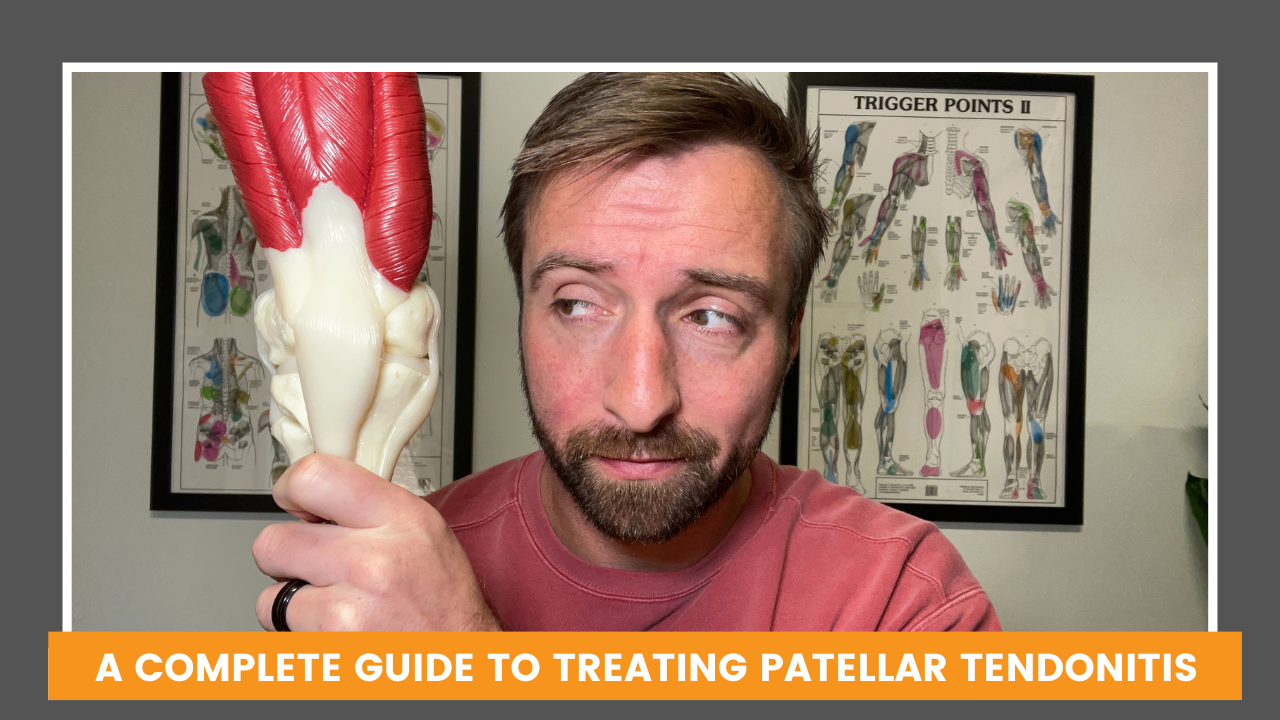A Complete Guide To Treating Patellar Tendonitis (Jumper's Knee)
Patellar Tendonitis, also known as Jumper's Knee, is irritation of the patellar tendon that often presents as anterior knee pain with squatting, jumping, and landing movements. Our complete guide to treating patellar tendonitis discusses ways to speed the healing, ease pain, decrease tension on the tendon, build strength to solve patellar tendonitis once and for all.
Healing The Patellar Tendon
The first step in treating patellar tendonitis is allowing the tendon to heal. The body has an amazing ability to heal itself. Which means you usually just have to stay out of the way by avoiding the activities that aggravate your patellar tendon.If you have the means, there are many treatments that can be used to promote tendon healing. The include the use of Instrument Assisted Soft Tissue Massage and the K-Laser which I outline in the video below.
Decreasing Pull/Tension on Patellar Tendon
It's unrealistic to expect your patellar tendon to heal if you keep aggravating the injury. You can avoid aggravating you tendon by decreasing the tension and pull that goes through the tendon itself. The patellar tendon is connected to the quadriceps muscle via the quadriceps tendon. Decreasing tension of the quadriceps and hip flexor will decrease the tension placed on the patellar tendon. There are a few ways this can be accomplished:
Voodoo Floss
This can be applied to the quads/hamstrings or the knee itself. The idea is that we're pulling our muscles through a compressed space to break any adhesions in the fascia/muscles to decrease tension in the patellar tendon
K-Tape/Chopat Band
Using K-Tape or Pre-Wrap to place a compression force over the tendon also decreases the force that goes through the tendon itself. Good for short term relief.
Active Stretching
Tightness in the quads or hip flexors can increase the pull on our tendon. Active stretching of these muscles can ensure we decrease the pull on the tendon.
Isometric Strengthening
Isometric exercise has been proven to have an immediate reduction in the pain associated with patellar tendonitis. One of the experts in the field (Jill Cook) has recommended 5 bouts of 45 second contracts at about 70% max contraction. At the gym this can be accomplished with a weight machine. In the clinic, the practitioner can provide the resistance.
Strengthening The Patellar Tendon
As pain subsides we can start building strength in the patellar tendon. Strengthening the patellar tendon is required to keep pain from coming back. The last thing you would want is for your pain to subside only to come right back the minute you got back to your activities. Some of my favorite patellar tendon strengthening exercises (from easiest to hardest) include:
The Single Leg Step Down
Single Leg Box Squats
Skater Squats (Assisted)
Strengthening Your Posterior Chain
Patellar Tendinitis is the result of a muscle imbalance between your anterior and posterior chain of muscles. An overdevelopment in our anterior chain (which includes the quads) results in irritation of the tendon. Restoring balance to these muscle groups is required to successfully treat patellar tendonitis.The posterior chain of muscles are all the muscles that span the back side of our body. They include your calves, hamstrings, glutes, and spinal muscles. Some of my favorite safe and effective exercises to strengthen the posterior chain include:
The Glute Bridge (And Variations)
The Single Leg Deadlift
The Kettlebell Deadlift
Improve Movement Patterns
How we move (aka movement patterns) is also important to treating patellar tendonitis. The hip hinge is a movement we use everyday that when not done correctly, contributes to irritation of the patellar tendon. Learning, practicing, and using the hip hinge will take tension off your patellar tendon when getting back to your favorite activties.
Learn How To Perform The Perfect Hip Hinge Here
On Left: Anterior Chain Dominant Squat. See knees over toes (increased tension on patellar tendon) and angel of knee.On Right: Posterior Chain Dominant Squat. See knees behind toes (less tension on patellar tendon).
Build Full Body Strength
Patellar Tendonitis doesn't happen in isolation. Weakeness in your core and lower extremity can lead to compensations that irritate your patellar tendon. Which is why starting a full body strength program can help you overcome patellar tendonitis as well as joint pain elswhere in the body. A few of my favorite exercises to include specifically for tendonitis include:
Treating patellar tendontitis includes improving movement, mobility, and strength to limit irritation of the patellar tendon. Following this full body approach you'll be able to get out of pain and back to your favorite activities (without pain coming back!).
For the last 10 years I’ve been helping adults build the strength and confidence to live active, healthy, and happy lives. My free program ‘Solving Pain With Strength’ gives you a step-by-step, approachable way to build strength without stressing your joints. Download it below and get started feeling better today.



